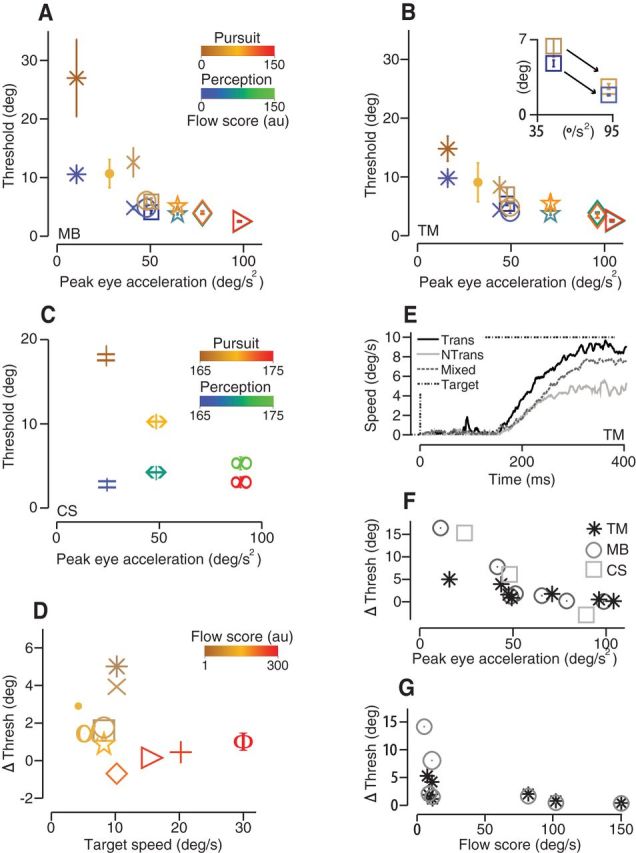Figure 6.

Threshold values and pursuit gain depend on optic flow score in the visual stimulus. A, Direction discrimination thresholds for pursuit (red-brown) and perception (blue-green) plotted against peak eye acceleration (°/s2) for subject M.B. for eight different targets. Symbol color corresponds to relative optic flow score scaled for clarity. Target forms (symbols) are defined in Results. B, Same data for subject T.M. Inset, Threshold versus eye acceleration for a nontranslating 10° dot pattern before and after a manipulation to increase its optic flow score. C, Pursuit (brown-red) and perception (blue-green) direction thresholds for 0.1 (=), 0.4 (↔), and 0.8 (∞) cpd motion cloud stimuli, subject C.S. D, Threshold difference plotted as a function of target speed, data from subjects T.M. and C.S. Threshold difference depends more strongly on optic flow score than on target speed per se. E, Trial-averaged eye speed time course differed when the dots and aperture moved together (Trans, black line) versus dots moving in a stationary aperture (N Trans, gray line). Randomly interleaving both targets produced intermediate eye speeds (Mixed, dotted gray line). F, Threshold differences between pursuit and perception plotted as a function of peak eye acceleration for three subjects. Data are replotted from A–C. G, Threshold differences replotted from A and B as a function of optic flow score (a.u.).
